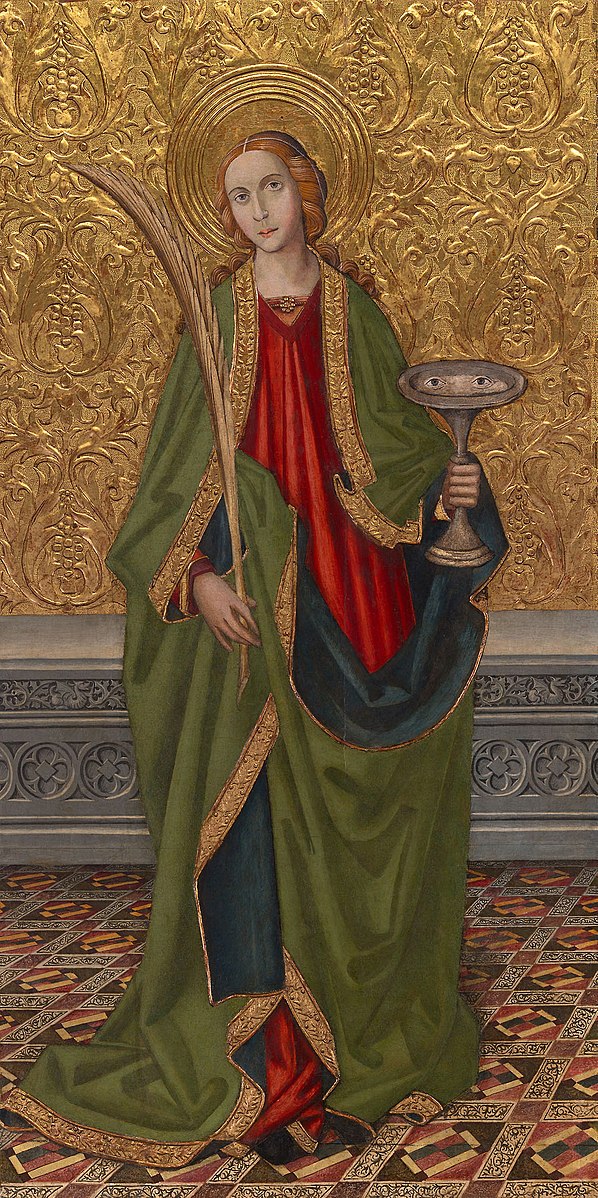Very early in the morning, before sunrise certainly, because it was pitch dark, on December 13 of my freshman year at college, someone banged loudly on my door. Stumbling out of bed, unable to find my glasses, and assuming there was some horrrible emergency, I opened my door to a blurry vision. The dorm president stood in the dimly lit corridor, dressed in a long flowing robe, wearing a wreath of lit candles that flamed around her head like a halo. She was holding out a tray of cookies.
It was, she said, a family tradition. In the old calendar, before the adjustments in the sixteenth and eighteenth centuries to realign dates with the actual solstices and equinoxes, December 13 was the shortest day of the year — the winter solstice. As Lucy is associated with sight and light, she was particularly venerated in Scandinavian countries with their long dark winter nights. My dorm president that year was Swedish by descent. In her family, a daughter would wake everyone on the morning of December 13 with lights and sweets. She was simply doing what she would have done at home.
The experience made a profound impression on me: fifty years later I can still recall the blurry vision (appropriate, given St. Lucy’s patronage of the blind) and the sense of being dislocated from my own time and space and somehow in a sacramental moment, even if it wasn’t my own tradition. What our dorm president was doing was an act of love, embodying light in the precise momen of the year’s greatest darkness, and a gift of herself and her own identity.
Lucy is one of those saints who transcends sectarian differences in the Christian faith. She is commemorated in Roman Catholic, Eastern Orthodox, Anglican, and Lutheran calendars: so hungry are we all for a vision of light in the darkness.
I didn’t go back to bed that morning. I was wondering if I would have had the courage and stamina to do what what our dorm president had done: be that light, if only for a moment.

